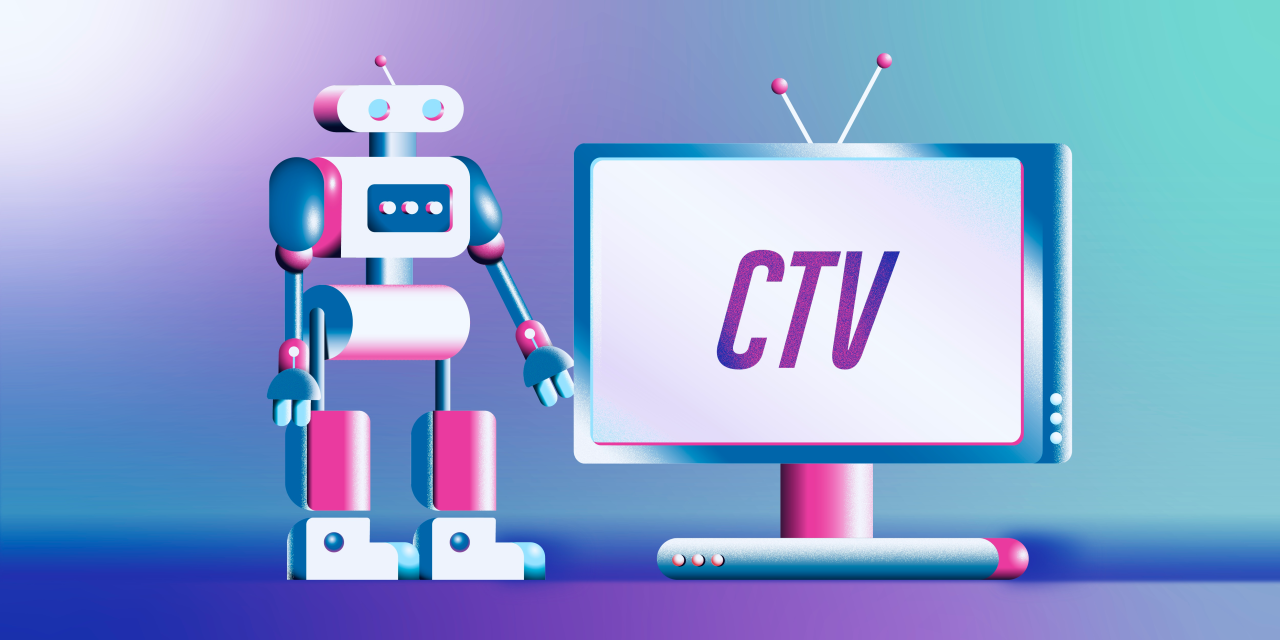Retail marketers are leaning on artificial intelligence to optimize CTV campaigns

Sponsored by MNTN
As retail marketers face new challenges, they are increasingly turning to artificial intelligence and automated tools to reach customers with high-impact messaging.
AI has long been used as a tool for testing and analytics, but advancements in machine learning and computer power have resulted in sophisticated platforms capable of generating text, images and other media that creative teams can use. In today’s competitive retail environment, teams are using these tools to streamline their tasks and offer more accurate insights into the performance of marketing investments.
“Artificial intelligence and automation are already making a difference in the way that retailers market and advertise, specifically addressing those challenges of needing to drive customer acquisition and performance and to accommodate more and more complex product lines,” said Matt Collins, director of product marketing at MNTN.
“We can already see how AI is changing the way that advertisers and agencies are thinking about creative,” he added. “Those tools stand to save a lot of the cost and time and time out of how the creative is delivered, which should serve the increased demands of retail marketers.”
Retailers are already using automated tools to optimize advertising efforts
As part of their push to engage consumers and acquire new customers, retailers are increasingly leaning on digital video, including CTV and social video. According to a survey of 100 retail marketers conducted by MNTN and Worldwide Business Research (WBR), 95% said CTV would play a significant role in their omnichannel marketing strategy in 2023.
AI has enabled tools that make the mechanics of video advertising faster, more precise and less cumbersome.
For instance, creating linear TV campaigns traditionally took several weeks, from developing a creative strategy to buying inventory, let alone producing the ads. Now, programmatic solutions use algorithmic tools to automate the buying and selling of digital ad space, including CTV ads. AI tools also allow advertisers to create rules for how, when and where ads are launched instead of placing ads manually. This gives retailers an advantage over counterparts that aren’t leveraging this technology.
Collins explained that this technology’s speed, depth and capabilities help advertisers earn more value for investment than manual optimization. Premium CTV platforms that use these automated tools can automatically review factors like ad placement, network and previous performance to determine optimal ad placement and make ad budgets more efficient. This is especially crucial as competitive retailers can no longer wait several weeks for ad updates.
“Solutions that can work quickly and be optimized toward a lower-funnel outcome become more valuable in this environment,” Collins said. “Retail advertisers need to be flexible about their approaches to shifting advertising dollars between brands or away from products that may be in low supply.”
Advertisers are developing creative by leveraging AI tools
Looking ahead, Collins argued that one of the most significant opportunities for AI is creative, which addresses one of CTV’s primary barriers to entry.
“One of the biggest blocks advertisers have to being able to get on connected TV advertising is creative. It’s being able to get TV-ready, TV-quality creative quickly and affordably,” Collins said. “Nowadays, the capabilities of CTV — especially around A/B testing — mean that advertisers need to create more than they have in the past. There’s a need for more volume, not just in connected TV, but in social media with places like TikTok and Instagram.”
While AI is still evolving, retail marketers already have access to solutions that can address the need for quick and quality creative. These tools can help determine what ads should look and sound like.
For instance, copywriters can use ChatGPT to combat writer’s block by brainstorming and then can formulate their own ad copy. Generative AI tools, such as Midjourney, enable users to conjure images that can be incorporated into storyboards.
“Creatives using these tools can produce really high-quality, emotionally-laden inspiration to bring their ideas to life,” Collins explained.
As retailers unlock the potential of AI, the human element will remain essential
Despite recent developments in AI, the human touch is still critical for steering the ship. Marketers still need to feed AI and automated tools prompts and review the outcomes.
Artificial intelligence is not at a point where the technology can reliably determine if creative is the right fit for a brand or target audience.
“AI doesn’t necessarily bring its own performance mindset — that has to be set and determined by the people creating the rules,” Collins said. “It’s important for advertisers, whether they’re more focused on the media operations aspect or on the creative aspect, to remember they’ve got a significant role to play.”
Sponsored by MNTN
